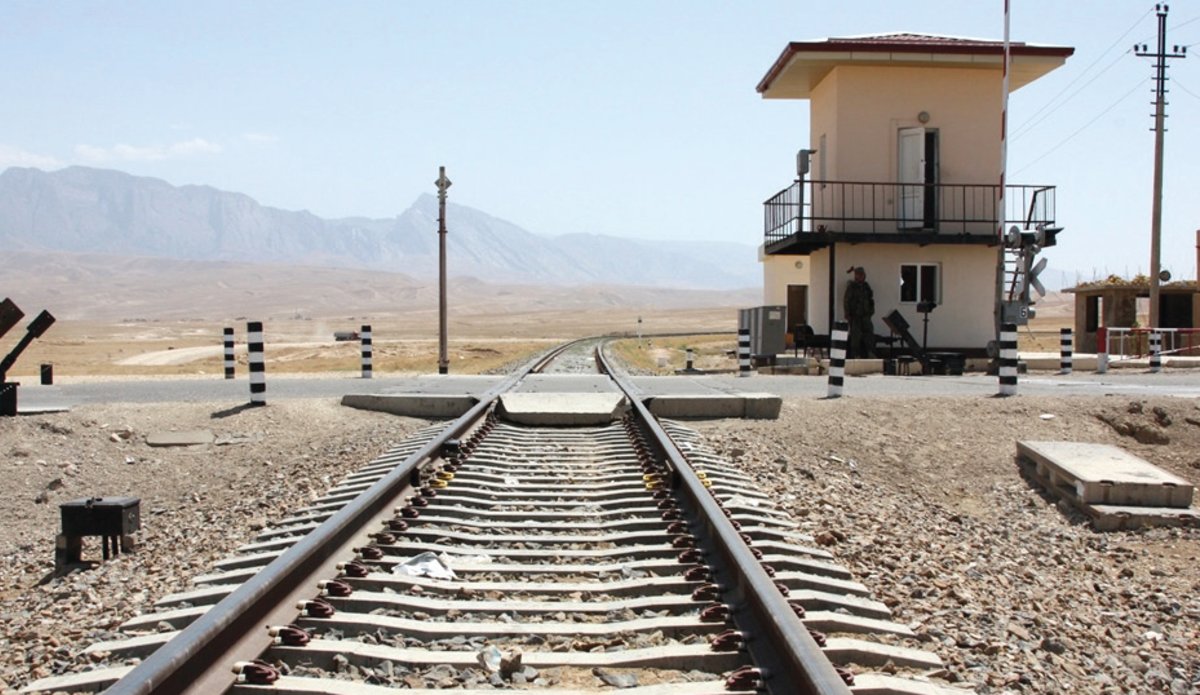Afghanistan’s railroad plans on track
KABUL - Long isolated even from its neighbours, Afghanistan may soon find itself at the centre of a Central Asian railroad network that promises to unlock new trade routes and spur economic development. The aim is to use railroads to turn Afghanistan into a regional hub of trade.
The potential of trains to act as a catalyst for growth is so strong that, according to the Deputy Minister for Public Works (MoPW), Dr. Ahmed Shah Wahid, the income from the transit trade could become Afghanistan’s second-biggest revenue earner, after the oil and gas sector.
In recent years, Afghanistan has made strides to improve its transportation infrastructure. It developed a highway network of 3,300 kilometres which permits drivers in other landlocked Central Asian capitals to transit through Afghanistan and reach either the Persian Gulf or Indian Ocean in about 30 hours.
Now the focus is on constructing rail networks, which is one of the most economical forms of transporting large quantities of goods.
“Under a 25-year plan, which was developed two years ago, a total of 3,500 kilometres of railway lines will be constructed in Afghanistan while the implementation of a short-term plan – under which a Turkmenistan-Afghanistan-Tajikistan railroad is being developed – will take three to four years to complete,” said Dr. Wahid.
On 5 June 2013, the Presidents of Afghanistan, Turkmenistan and Tajikistan attended a ground-breaking ceremony in Turkmenistan for a 590-kilometre rail line linking all three countries. Some 450 kilometres will pass through the cities of Aqina, Andkhoy, Shebarghan, Mazar-e-Sharif and Kunduz in northern Afghanistan. The line will end at Kolkhozobod, in Tajikistan. Plans exist to eventually extend that line to Kashgar, in China.
This and other railway initiatives are part of the Transport Strategy and Action Plan of the Central Asia Regional Economic Cooperation Program (CAREC), which aims to open alternative routes of supply for national and international trade, as well as for humanitarian relief coming into Afghanistan. Founded in 1997, CAREC is a partnership of eight Central Asian Countries – Afghanistan, Azerbaijan, China, Kazakhstan, Kyrgyzstan, Mongolia, Tajikistan and Uzbekistan – and six multilateral institutions, including the United Nations Development Programme (UNDP), the Asian Development Bank (ADB) and the World Bank.
The technical and financial studies for the first phase of the route inside Afghanistan have been undertaken with financial assistance from the ADB. The ADB is also committing $240 million to build the part of the railway running through Afghanistan.
Plans also exist to connect the northern line with a rail line running to the western province of Herat. There, it would link with a 124-kilometre track under construction that links the provincial capital, also known as Herat, with the city of Khaf in neighbouring Iran.
Afghanistan completed its first railroad in 2010, a 75-kilometre track connecting Mazar-e-Sharif with the border of Uzbekistan. From Uzbekistan, travellers can continue to destinations throughout Central Asia and Europe. According to studies conducted by the Afghan Government, the railroad is already a success and has helped to ease a bottleneck of goods at the Hairatan dry port on the Uzbek-Afghan border. Officials say the line serves as a hub for almost 50 per cent of the country’s total imports, including essential commodities such as oil, fuel, flour, fertilizers, construction materials, agriculture equipment and products and consumer goods as well as humanitarian relief items.
Plans also exist to build a rail line heading to the country’s south. The Afghan Government recently signed a memorandum of understanding with Pakistan to build railway tracks that will help expand trade between the two countries. According to blueprints, a railroad will connect the city of Quetta in Pakistan to the city of Spin Boldak in Kandahar. Another line would connect Peshawar with Jalalabad.
Dr. Shah said that the long- term plan is to link the cities of Kandahar, Herat, Jalalabad and Kabul by rail.
“The transit trade will have a positive impact over the economic condition of the Afghanistan and its people,” he added.
 UN
UN







